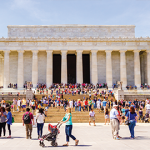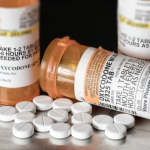(Reuters Health)—Art museums may have an analgesic effect on chronic pain, a small study suggests.
Chronic pain sufferers who took guided tours of art museums felt less discomfort and unpleasantness related to their pain shortly afterward, researchers found.
The researchers invited 54 visitors to the Crocker Art Museum in Sacramento, Calif., who reported experiencing chronic pain to participate in private hour-long tours led by gallery staff. Tours included about three to five objects, and study participants were given places to sit in a gallery that was closed to other museum visitors to make the experience calmer and easier to navigate for individuals with mobility issues.
The tour leaders’ dialogues focused on participants’ experiences rather than the art object and its history. In addition, the tour guides emphasized inclusivity by, for example, underscoring that the museum is a public organization.
Before the tours, and again afterward, researchers asked participants about their pain levels and the extent to which they felt socially disconnected. Overall, 57% of participants reported pain relief after the tour, and most of them reported feeling less unpleasantness due to pain when it was over. Most of them also reported feeling less socially disconnected.
“The experience of chronic pain is complex, and it involves an intermingling of physical sensations and emotional reactions to those sensations,” says study leader Ian Koebner, director of integrative pain management at the school of medicine at the University of California, Davis in Sacramento.
“But that is not the whole picture,” Koebner said by email. He added, “The individual’s experience of pain—both physical and emotional—is always embedded within a social context (that) can greatly impact the individual’s experience of pain.”
Although previous research has linked physical pain with social disconnection, it’s not clear how to translate this into better care for patients, Koebner says. The goal of the current study was to see if experiencing art in a social context might help ease pain as well as feelings of isolation or disconnection.
The study wasn’t a controlled experiment, researchers note online July 24 in Pain Medicine.1 It’s also possible the impact of art on pain sensations might be different for people who don’t enjoy museums than it was for the study participants who came to the museum on their own.
Still, it’s possible that the subjective experience of beauty in art might help reduce pain or take people’s minds off their discomfort.
“I think art, in the broadest sense of the word, is an experience, not an object,” Koebner says. “And I believe that experience, which includes a sense of meaning, inspiration and connection may be analgesic.”

